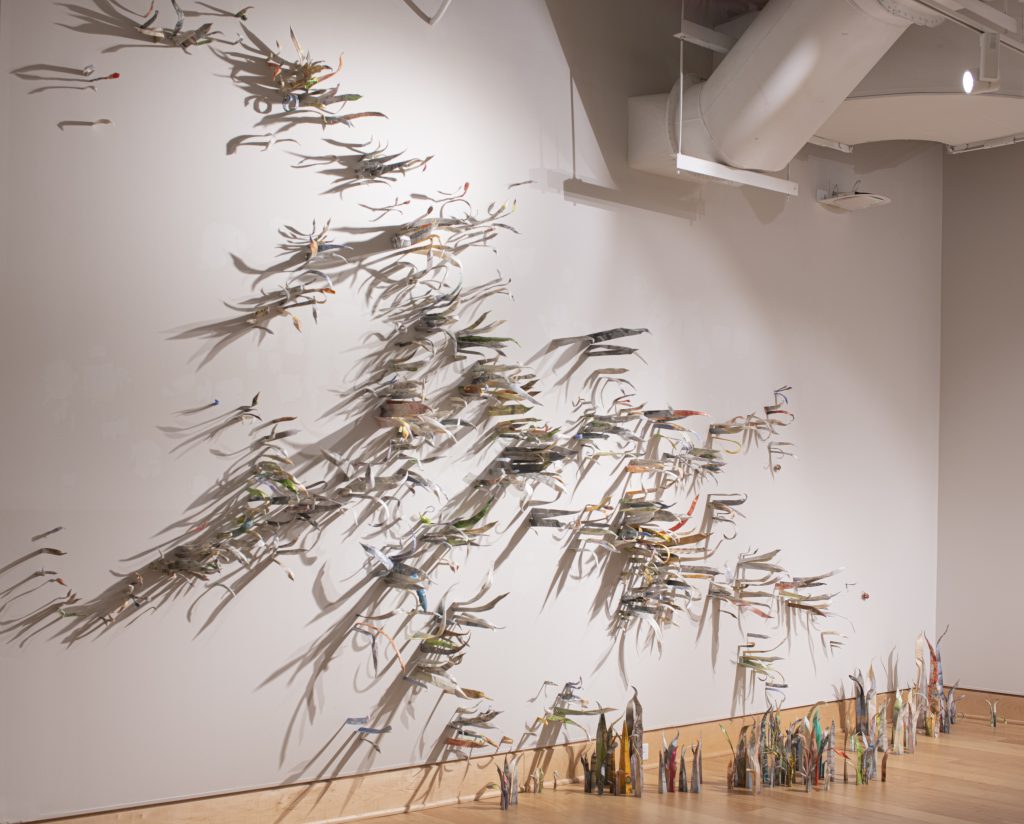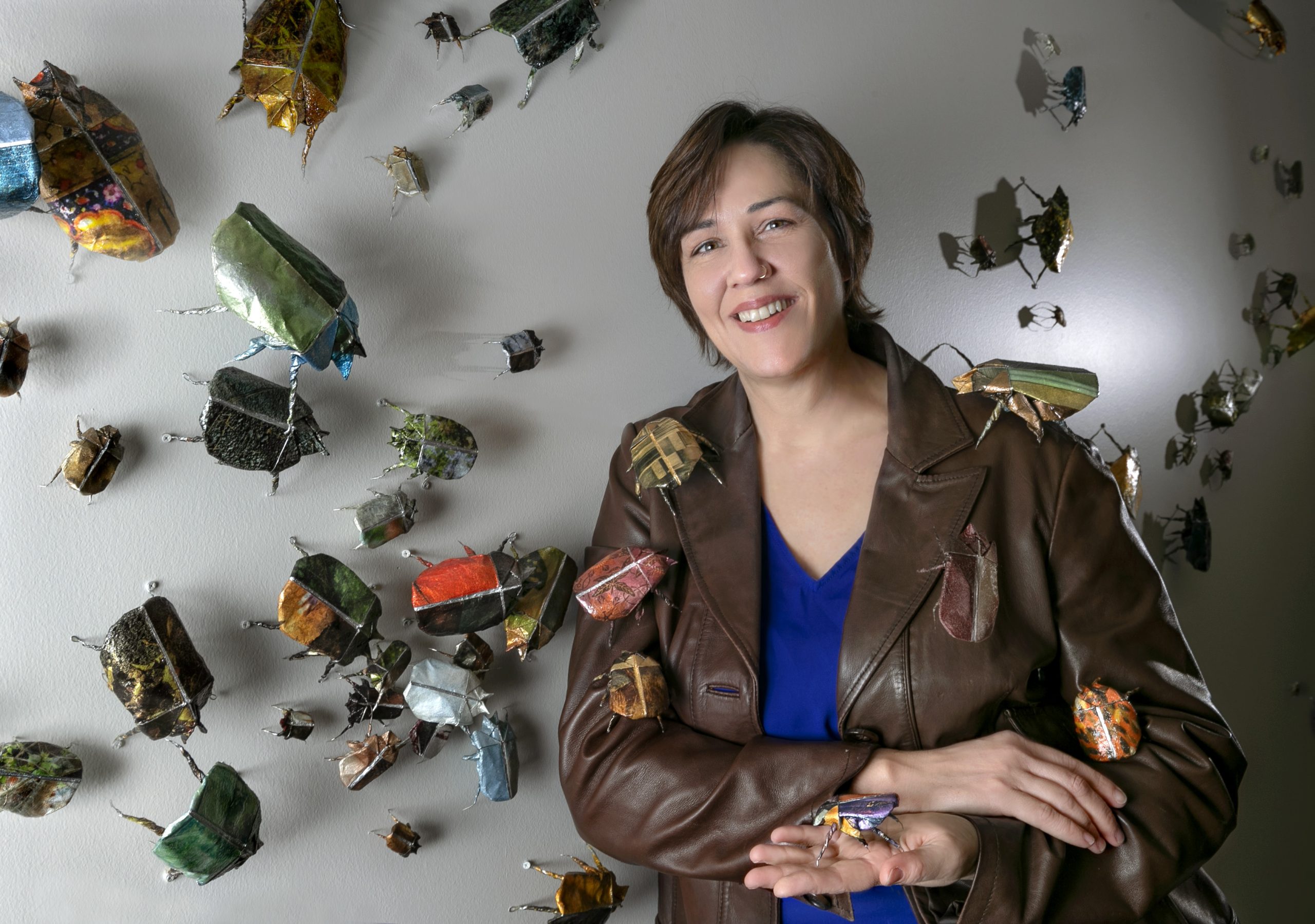Women to Watch at UA Little Rock: Joli Livaudais
In celebration of Women’s History Month, UA Little Rock is profiling women in leadership positions who are making a difference at UA Little Rock and in the community. The first Woman to Watch at UA Little Rock of 2021 is Joli Livaudais, associate professor of photography and graduate coordinator for the Department of Art and Design.
Tell us about yourself?
I started out my education in the field of experimental psychology, but although I love psychology I found I was unhappy unless I was able to be creative. I earned my MS in psychology, but instead of continuing on to a Ph.D. I changed gears and decided to pursue art, and photography in particular. I’ve worked as a commercial photographer in Dallas, Texas, and Monroe, Louisiana. I had a studio and an art gallery in the downtown Monroe area for seven years, but I knew I really wanted to pursue fine art photography and teaching. I went back to school to get my MFA at Louisiana Tech University and graduated in 2013. I started working at UA Little Rock in 2014.
What are your job duties at UA Little Rock?
I teach the photography classes in the department, which is my primary responsibility. I also serve as the graduate coordinator for the Art and Design department. We have a Master of Art degree with emphases in art history and visual art. Although the MA has been around for many years, we restructured it in 2018, so in many ways it’s a fledgling program. I am also the director for the Focus Gallery, which is a small gallery space in the art building. We bring in a new exhibition every 4 – 6 weeks, which is hard work but a lot of fun. I enjoy being able to work with other artists, and it’s great for the students to see the artwork, and the shows are free and open to everyone.
Much of my personal artwork is not what most would call traditional photography. Historical photographic processes are one aspect of alternative photographic methods, which includes not only methods used before commercially made film was invented, but also some types of printmaking processes, hand-coloring photos, or creating photo sculptures and installations. It lets you be very hands-on in photography. We gained many incredible advantages when photography went digital, and I love to teach digital photography, but we did lose much of the hands-on craft that was part of working in the darkroom. It’s fun to teach students the older methods. There are always a percentage of my students that fall in love with it.
For several years, you and your photography students have run a popular annual fundraising event where you take professional photos of dogs. How did the Puppy Mugs fundraiser get started?
Puppy Mugs is a dog portrait fundraiser put on by the students, faculty, and alumni from the photo program. For the past six years, we have held the fundraiser when we teach the studio lighting class. It is a great opportunity for the photography students to use what they’ve learned, and it’s always been a really fun day, with dogs and their people filling the Art and Design department for a few hours of fun. Proceeds from the fundraiser have been used to purchase photography equipment for student use, such as new strobe equipment for the Photographic Lighting class and new film cameras for the View Camera course. This year, we had to cancel Puppy Mugs due to pandemic safety precautions.

What inspired you to want to be an artist?
I’ve always been a creative person and dabbled in art, but as a young person I never had confidence in my abilities to think I could “be an artist.” I tell people I tried everything else first, including the military, psychology, and commercial photography. None of that satisfied me. I needed to do fine art to be happy, and I felt that teaching was a great fit, and it wasn’t until I accepted that and had faith in it that things came together for me.
How did you get involved in the “Arkansas Women to Watch” art exhibit?
There is a biennial international exhibition at Washington D.C. at the National Museum of Women in the Arts known as Women to Watch. They have a different theme for every Women to Watch exhibition. For 2020, the theme was paper, and the show was titled “Paper Routes.” The Arkansas Committee of the National Museum of Women in the Arts asked Allison Glenn, associate curator of contemporary art at Crystal Bridges, to curate and nominate a list of Arkansas Women for the national show. I was honored to have one of my pieces selected to show in D.C. in 2020. For 2021, all four of the artists that Allison selected will tour the state together. Being in the D.C. show is the most exciting thing that has happened to me professionally, but I am thrilled about the Arkansas tour because I can travel to those venues to install my artwork personally, which is important because of the nature of the pieces.
The exhibit that made it in the D.C. show is my installation of the origami beetles folded from photographs called “All That I Love.” For the state show, I am showing a second installation, which is paper grass blades that come out of the wall, also folded from photographs. I worked on them for a couple years. As soon as they took my information to nominate me for the national exhibit, I started working as if I had gotten it. I was on a really rigorous folding schedule for the past two years. I folded over 1,400 beetles and 900 pieces of grass. It was over 2,000 hours of work to do the beetles, and the grass blades takes 45 minutes each. My hands were always busy. Some people knit, but for the past two years, I was always folding beetles and grass blades.

What’s next in your professional career?
I am really looking forward to my upcoming OCDA, or what many call a sabbatical. I submitted a proposal for a new body of artwork, and it was approved for Fall of this year. The project involves microscopic photography, and I will use a layered combination of historical photographic printing processes, printmaking, and hand-coloring. It’s an exciting blend of art and science, and I am eager to get to work on it.
What woman has inspired you the most and why?
Although many women artists have inspired me with their talent, the person who has inspired me the most in my creative career is Jes Schrom. Jes was photo faculty at Louisiana Tech University when I was a graduate student, and she was one of my graduate committee members. Not only did she teach me to love historical and alternative photography, which has become my primary form of art making, she also helped me find the meaning in my artwork and has become my role model for what it means to be a great teacher and mentor.
What advice would you give to the next generation of women artists?
The best advice I can give anyone is to be persistent and don’t give up. I think every field is competitive. If you want to be one of the best, it will be challenging no matter what field you are in. The ones who succeed are the ones you don’t quit. You have to decide that is what you want, and go for it.
How have you adapted to life during COVID-19?
I miss being with my students in the classroom. We’ve been careful and diligent with everyone’s safety. We’ve split our classes into groups, so we can meet with fewer people in the space. I’ve learned how to do YouTube videos and online demos. I miss being with my students and helping them on the fly. There is so much of what we do that is demo based and being able to mentor students is important. With photography, I’m lucky. Photography has a digital aspect that I can use, regardless of whether I am teaching online or in person.
